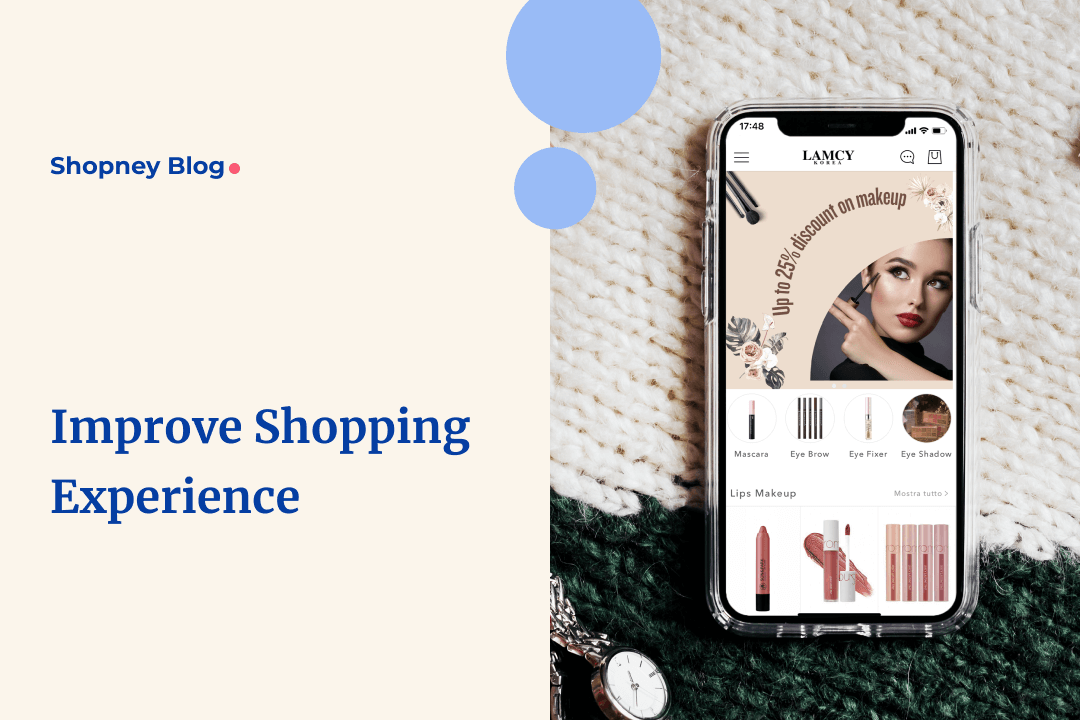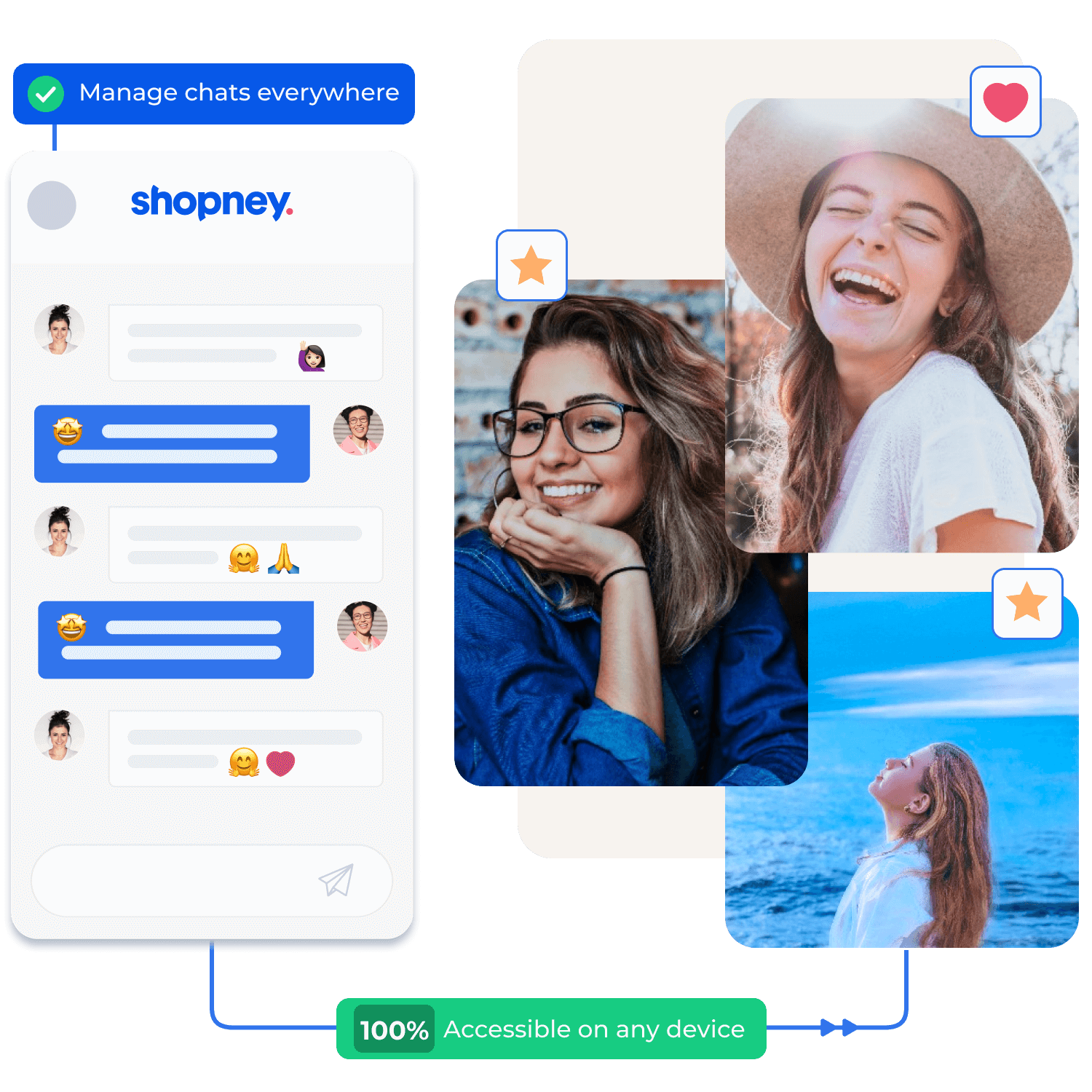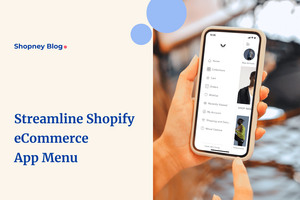
In a world where the current fiscal instability is driving the highest inflation in 40 years and consumers are on the hunt for better deals, having loyal customers has never been more critical.
Offering an exceptional eCommerce app experience with quick and robust customer support to push back fierce competition could be the thing that sets your Shopify store apart.
In fact, 73% of consumers say that customer experience has a significant impact on their purchasing decisions, and increasing customer retention rates by just 5% can boost profits by as much as 95%.
In this guide, we’ll share time-tested tips and strategies so you can create an app experience that not only meets but exceeds these evolving consumer expectations.
16 tips to build an engaging eCommerce mobile app user experience
Mobile apps have been proven to increase customer engagement and loyalty, with app users being 3x more likely to make a purchase and 2x more likely to return to your brand compared to non-app users.
Let’s look at actionable strategies that directly impact customer retention and, by extension, your bottom line.
1. Provide an on-brand experience
When customers download your Shopify store mobile app, they're looking for the same visual and emotional impact they've come to expect from your website.
A jarring or off-brand experience can erode their trust and loyalty.
This includes the tone of your communications, the style of your imagery, and even the user interface elements.
For instance, if your brand is known for its minimalist design and straightforward messaging, your app should reflect these qualities.
Every touchpoint, from the welcome screen to the checkout page, should be a seamless extension of your brand identity.
2. Enable in-app chat
Customers expect immediate answers to their queries.
Whether they have questions about product features, payment options, or shipping policies, a quick chat can resolve issues in real-time.
Your support agents can use the chat to recommend products, offer discounts, or even guide a customer through the checkout process.
Moreover, in-app chat can collect valuable data and insights into customer behavior and preferences and can be used to personalize future interactions, making each customer feel valued and understood.

3. Leverage push notifications
Notifications serve as a direct line of communication to your customers. Use them to alert customers about new product launches, limited-time offers, or even remind them of abandoned carts.
The key is to make these notifications as relevant and personalized as possible.
For instance, if a customer has been browsing winter coats, a timely notification about a flash sale on winter apparel could be the nudge they need to complete a purchase.
Since your customers can choose to enable or disable these notifications, it makes them more likely to engage with the notifications they do receive.
4. Build a personalized customer account page
Your customers should be able to manage everything related to their interaction with your brand, all in one place.
An efficient Customer Account Page should offer features like
- saved addresses for quicker checkouts
- wish lists to bookmark favorite items
- an easy way to track current orders
- show loyalty points or rewards
All of these will give customers an added incentive to return to your app and enjoy a friction-free shopping experience.
5. Design a simple and clean navigation
A complex or confusing navigation system can quickly turn an interested shopper into a lost and frustrated user. You have to make it as easy as possible for customers to find what they're looking for.
This involves having a clean, intuitive layout with clearly labeled categories and sub-categories, features like a sticky menu that remains accessible as users scroll, or a 'Back to Top' button.
A prominently placed search bar with features like auto-complete and typo tolerance will also significantly speed up the product discovery process, making shopping more enjoyable for your customers on the app.
6. Design advanced filters
Another essential part of navigation optimization is having advanced filters, especially if your Shopify store has many offerings.
Finding the right product should be quick and easy. This needs a mobile-first approach that allows them to quickly sort through product categories, sizes, colors, price ranges, etc, without having to scroll endlessly.
Consider collapsible menus that expand upon tapping, sliders for price ranges, and easily selectable checkboxes so your customers can explore your catalog properly.
7. Include advanced search options
Perhaps your user remembers to refill their stock of your product while driving. Or they often turn to Alexa or Siri to build their shopping lists.
Voice search is increasingly becoming a preferred method of search for mobile users, along with image search.
By simply uploading a picture, customers can find similar products in your inventory, making the shopping process more interactive and engaging.
Additionally, make sure your search algorithm has auto-complete and typo-tolerance features enabled.
Auto-complete suggestions can guide the user to relevant products even before they finish typing their query, while typo tolerance ensures that minor spelling errors don't lead to zero results.
8. Leverage flexible and mobile-first payment methods
A complicated or time-consuming checkout will hurt your conversions. Use mobile-first payment methods that are designed with the small screen in mind, prioritizing speed, simplicity, and security.
Options like Apple Pay, Google Pay, and one-click checkouts can make the payment process almost instantaneous by eliminating the need to enter lengthy card details or remember passwords.
They’re also trusted modes of payment that will reassure your customers about the safety of trusting their details with your app.
9. Guide shoppers with product recommendations
Product recommendations work as a virtual sales assistant, guiding customers through your inventory and introducing them to products they might not have discovered otherwise.
Leverage data from customer behavior and preferences (think wishlist and past purchases), to offer highly targeted suggestions that convert better.
For instance, if a customer has been browsing athletic wear, recommend related items like sports shoes or fitness accessories.
Also, by placing product recommendations strategically at different stages of the shopping journey, from the homepage to the checkout page, you build multiple touchpoints for customer engagement.

10. Offer personalized customer experience
Personalization doesn't need to stop at product recommendations.
Use geo-location features to offer localized promotions or to provide information about shipping costs and delivery times specific to the user's location.
You can also send special offers on user-specific milestones, such as birthdays or anniversaries of their first purchase. This not only delights the customer but also increases their emotional connection with your brand.
11. Optimize your checkout
All that effort in getting a user to browse and add to cart will vanish in seconds if your app’s checkout process has too many steps.
Each extra step can increase your cart abandonment rate. Here, include features like auto-fill for shipping and payment details to save time and reduce friction.
Hidden costs or unexpected fees can also discourage customers at the last minute. Make sure you clearly display all costs, including shipping and taxes, early in the checkout process to avoid drop-offs.
12. Implement a loyalty program
Start by integrating a point-based system within your app, where customers earn points for every purchase, review, or social media share.
These points can then be redeemed for various rewards such as discounts, free shipping, or exclusive merchandise.
Make sure to display their point balance clearly within the app, preferably on the customer account page, so users can easily track them.
13. Run in-depth customer research
Conduct in-app surveys or questionnaires to find what features your users find most useful and what improvements they'd like to see. Make sure to offer an incentive, like a discount or free shipping, to encourage participation.
You can also observe their in-app behavior using analytics tools that track metrics like session duration, pages viewed, and conversion rates. Identify which sections of the app are most engaging and which need improvement.
Additionally, look at any customer interactions with your customer service team and note any feedback that will help design the next product update.
For example, if you notice a spike in queries about a particular product feature, this could indicate that the feature is either very popular or confusing to users.
Lastly, regularly review customer reviews and feedback on the Play Store and App Store and include this feedback in your next product updates.
14. Display customer testimonials
Reviews, a highly persuasive form of social proof, increase confidence in potential buyers.
To leverage this, integrate a review section within your app where customers can leave both star ratings and text reviews and make it easily accessible under each product description within a dedicated 'Reviews' tab.
Remember to actively manage and moderate this section. Respond to reviews, both positive and negative, to show that you value customer feedback.
In fact, by responding to negative reviews promptly and offering solutions, your reputation of taking things in stride and working to improve them will only work in your favor.
15. Build an omnichannel strategy
Your customer will access your brand through different mediums, and any customer support query received on one should be considered before sending a response through another channel.
A central or unified customer service platform that can integrate all these channels with a single dashboard for agents to manage interactions is key to success here.
16. Include a money-back guarantee
Very often, the idea of a complicated or unclear return process will stop potential users from purchasing
Instead, clearly state your return policy and your guarantee in an easily accessible section within the app, such as the FAQ page. Outline the time frame for returns, the condition the product must be in, and the process for initiating a refund.
You can also offer free return shipping or provide a prepaid shipping label. The easier you make it for customers to get their money back, the more likely they are to trust your brand and complete a purchase.

Conclusion
From offering an on-brand experience to leveraging social proof, many features play a crucial role that impact eCommerce app experience.
It can be overwhelming and confusing to navigate all this while designing a mobile app.But it doesn’t need to be.
Shopney not only comes with built-in features designed to optimize customer engagement and conversions but also offers powerful integrations with the best apps in the market to make it seamless.
If you're looking to take your Shopify store mobile app to the next level, don't hesitate to reach out to us!



